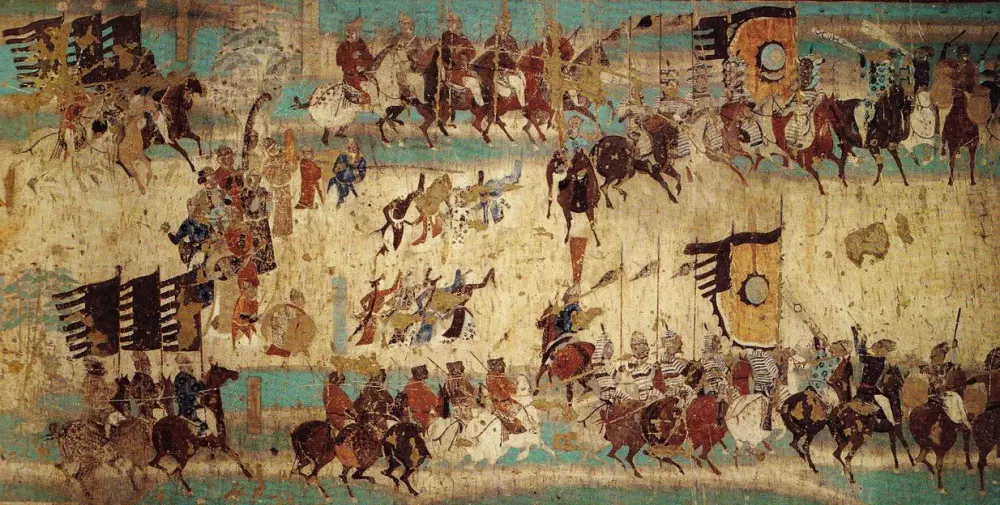A poet plays over in his mind the words and images of his poem. So too, does the translator. Let us then revisit Lu Lun’s Border Songs beginning with number one of four.
Hawk feathers flutter from his golden arrow
His woven silk flag waves like the tail like a swallow
One man rises to gives the order
Thousands follow as one, shouting, HU!
Lu Lun’s Border songs recount the exploits of General Li Guang (died 119 BC) .
From Sima Qian’s Records of the Grand Historian (Shǐjì 94 BC), General Li Guang was a man of great build, with long arms and good archery skills, who on one occasion, legend says, was able to shoot an arrow deeply into a stone which resembled the shape of a crouching tiger. To China’s northern enemy, a tribe called the Xiongnu (generally associated with the Mongols), he was known as a determined opponent who would willingly face armies of superior numbers. He was haunted by bad luck in battle and committed suicide after a loss at the Battle of Mobei (Gobi Desert).
The English Translation
In writing this series of poems, Lu Lun was no doubt mindful of the Tang dynasty’s troubles during the An Lushan Rebellion. General An Lushan was from the northern tribes and fought for the Chinese emperor before rebelling. For an extended period of time, he and his armies wrecked havoc on the Tang dynasty. These troubles were the subject of many Tang poets. Lu Lun’s ancestral home was Fanyang, modern day Beijing, on the northern extreme of the Chinese Empire, where An Lushan began his rebellion.
First line, the characters for golden arrow are 金 僕 姑, literally golden servant girl. The pinyin translation of last two characters (servant girl) rhyme (pú and gū). In Chinese military history, armies relied heavily on archery and the general in command would carry a golden arrow with feathers to signify his authority.
Second line, the war flag of embroidered silk is woven, a metaphor for the army itself which is woven to together with individual soldiers. Like the swallows of the air they will then move to and fro in unison.
Third line, even in the flight of the swallow, one bird makes a movement and others follow. The general raises his arrow and gives the order to advance.
Fourth line, thousands raise their voice and shout. The Chinese character for shout is 呼 and also the sound of the wind. If you have ever stood in a field and heard the sound of a flock of swallow changing direction, you will have the sense of the imagery.
The rhyme scheme is aaba, gū, hú, lìng hū.
Original Chinese Characters
鷲翎金僕姑
燕尾繡蝥弧
獨立揚新令
千營共一呼
The Title
The title is almost always translated as Border Songs. For border, Lu Lun chooses the Chinese characters 塞 and 下, sāi and xià, literally beneath the pass. He picked these characters, no doubt, because they work together poetically.
French Translation
Des plumes faucon palpitent de sa flèche en d’or
Son drapeau soie ondule comme la queue hirondelle
Un homme se lève pour donner l’ordre
Des milliers suivent comme un, en criant, HU!












